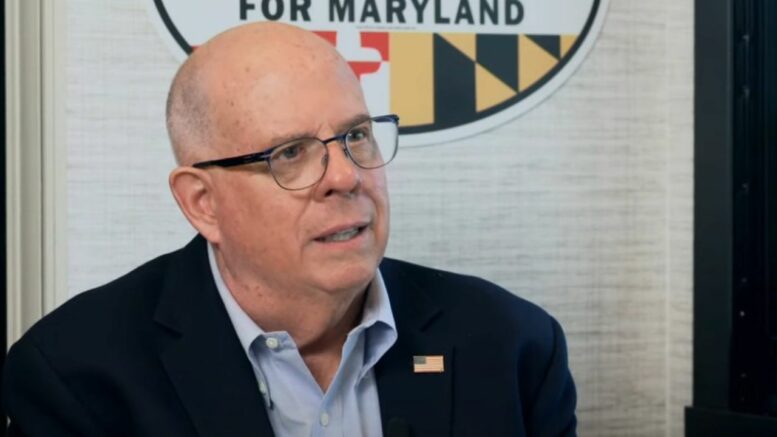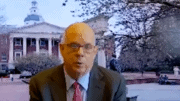The numbers couldn’t be clearer: Maryland is on the precipice of a fiscal disaster.
Maryland Matters reporter Bryan P. Sears’ Nov. 13, 2024, report on Maryland’s incoming fiscal forecast reveals a staggering and unprecedented budget gap.
With expenses projected to far outpace revenue, the state could be in its worst economic position in decades.
For all of Maryland’s modern progress, it is impossible to ignore former Gov. Larry Hogan’s warnings on fiscal responsibility as he exited office in early 2023.
Mr. Hogan, who inherited a deficit from aspiring Democratic National Committee chair Martin O’Malley, restored fiscal balance and left the state with a robust budget surplus after eight years as Maryland’s moderate governor.
Larry Hogan’s appeal to preserve the Rainy Day Fund and keep a sizable surplus has become prophetic.
Maryland’s Dire Fiscal Outlook
Democrats who are currently steering Maryland’s fiscal ship face some brutal arithmetic.
The state is forecasted to carry nearly $5 billion in deficits by fiscal 2028, which will only grow by fiscal 2030, with just 84% of projected expenses covered.
The warnings are stark.
According to Department of Legislative Services analyst David Romans, Maryland will face a “significant challenge” in paying its bills in just a few years.
That forecast has created a real, looming crisis that could dramatically affect state residents for years.
But Mr. Hogan’s approach to fiscal prudence — keeping a record Rainy Day Fund, avoiding reckless spending, and maintaining Maryland’s strong fiscal position — is desperately needed again.
The General Assembly seems deaf to such calls, with decisions edging dangerously close to draining reserves without a long-term plan.
For all the criticisms Mr. Hogan faced during his gubernatorial tenure, he did what leaders should do in times of fiscal uncertainty: he bolstered Maryland’s budget with a cushion that could withstand unpredictable financial storms.
When federal aid flooded the states during the pandemic, Larry Hogan’s administration wisely stashed much of it away, leaving a legacy of a $2.5 billion Rainy Day Fund.
Now, Gov. Wes Moore and his far-left political allies in the General Assembly appear ready to spend that cushion. Their approach risks leaving the state naked to a possible recession without the fiscal defenses Mr. Hogan so painstakingly built.
Maryland Democrats Ready to Raid State’s Rainy Day Fund
Let’s face it: There is no good rationale for raiding the Rainy Day Fund amid a surplus, a tactic that feels dangerously like the “old habits” Mr. Hogan warned against.
The state needs those funds more than ever now, and using them for short-term fixes is a mistake.
To rely on what are, essentially, one-time fixes without addressing the core budget imbalance is not governance; it’s a gamble, one that may cost Marylanders dearly.
Larry Hogan was firm in his parting message: the state must avoid using expanded budgetary powers irresponsibly.
The General Assembly, now robustly empowered to add and cut spending in the budget, appears to have embraced power without restraint.
They could restore discipline by holding back from tapping the Rainy Day Fund.
But Maryland’s far-left Democratic legislators look to Maryland taxpayers as nothing more than a piggy bank for their out-of-control spending.
And what’s Wes Moore doing about it?
Wes Moore’s “Budget Adjustments” & Fair Share Maryland’s Band-aid Tax Plan
While Governor Moore’s recent $150 million budget adjustments were labeled as cuts, they merely shifted spending to cover increasing Medicaid and childcare costs.
We all know Wes Moore’s cuts aren’t really cuts. But he’s a politician.
Meanwhile, rather than taking bold actions to curb spending, Maryland’s legislative leaders have taken up the “Fair Share Maryland” initiative, a $1.6 billion broad-based tax proposal.
This plan is pitched as the savior Maryland needs. It aims to close tax “loopholes” for corporations and levy taxes on capital gains and high earners.
Yet, such an approach could backfire, dissuading businesses and individuals from investing in Maryland when the economy remains stagnant, with only 0.9% projected revenue growth.
This band-aid tax plan may bring in some revenue but doesn’t address the ballooning expense problem or the state’s structural imbalances.
Mr. Hogan’s economic strategy was to trim taxes and foster economic growth through a leaner government that lived within its means.
Today, however, Maryland’s progressive lawmakers are seeking new ways to burden Maryland residents with more taxes.
Of course, there’s more at stake than just balancing numbers in a ledger. With every deficit forecast, the state’s ability to deliver essential services hangs in the balance.
As Hogan highlighted throughout his two terms as governor, a solid fiscal position is not just about avoiding red ink—it’s about ensuring Maryland has the means to support education, healthcare, and public safety during turbulent times.
Wes Moore’s Expansive Investments That Maryland Cannot Afford
Governor Moore has argued for expansive investments in these areas, but without sustainable revenue to back them, these promises may be little more than political posturing.
Mr. Hogan’s fiscal approach was far more measured.
He wasn’t anti-spending; he prioritized public safety and behavioral health and bolstered education where feasible, all while keeping an eye on the state’s fiscal health.
Our former governor recognized that responsible budgeting is essential for Marylanders to trust that their government will protect them and not overburden them when times are tough.
One does not have to be a fan of Larry Hogan’s every policy to see the merit in his warnings.
As Maryland’s deficit projections grow, the question looms: What will it take for state leaders to admit that fiscal discipline is not a partisan issue but a fundamental responsibility?
It’s time for the Maryland General Assembly to acknowledge that sustainable spending and a robust Rainy Day Fund are crucial to Maryland’s stability.
The last thing the state needs now is an economic storm that leaves us with an empty coffer and an ever-growing deficit.
Paging Larry Hogan: Run for Governor in 2026
Maryland deserves a governor who understands the stakes and the value of foresight.
Wes Moore, admirable in many respects, has not yet demonstrated the fiscal rigor that Larry Hogan championed.
Should Maryland face a fiscal reckoning, Mr. Hogan would be the leader with the proven track record, experience, and no-nonsense approach needed to navigate it.
Governor Hogan: After you return from Disney World, fire up the campaign bus and get ready to take on Wes Moore in 2026.
We need you more than ever, Gov.





